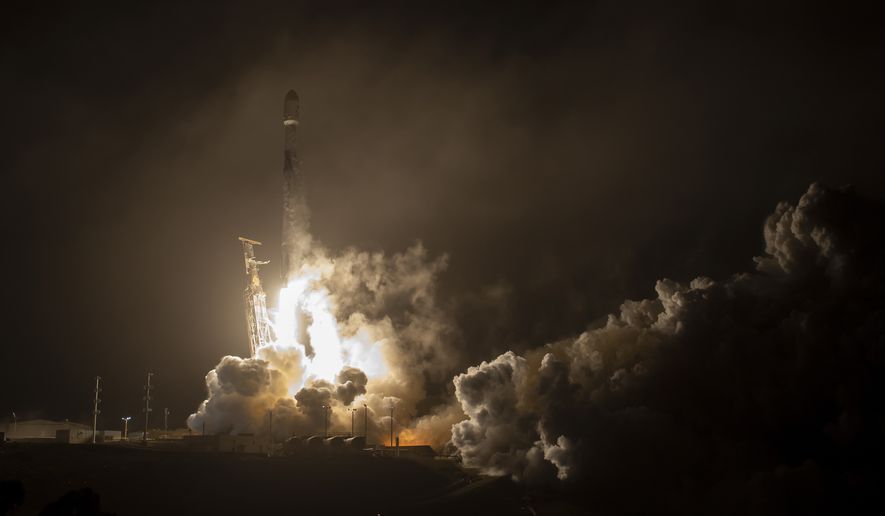NASA and SpaceX on Tuesday night launched a spacecraft that will crash into an asteroid, the first-ever test to see if it’s possible to redirect a space rock that could smash into the planet.
The experimental technology took off at 10:21 p.m. PST on a SpaceX Falcon 9 rocket from the Vandenberg Space Force Base in California, NASA announced. Its target? The moonlet, Dimorphos.
The spacecraft will collide into the asteroid — which NASA said is not a threat to Earth — and slightly alter its course as part of the Double Asteroid Redirection Test (DART) mission. Dimorphos orbits a larger asteroid named Didymos about 6.8 million miles from Earth and measures about 530 feet in diameter.
“DART is turning science fiction into science fact and is a testament to NASA’s proactivity and innovation for the benefit of all,” NASA Administrator Bill Nelson said in a statement. “In addition to all the ways NASA studies our universe and our home planet, we’re also working to protect that home, and this test will help prove out one viable way to protect our planet from a hazardous asteroid should one ever be discovered that is headed toward Earth.”
The mission will test a method of deflection called kinetic impact, in which a spacecraft can independently navigate to target and hit an asteroid. The test will offer crucial information to help prepare for an asteroid that could strike Earth, NASA said.
DART’s spacecraft won’t reach the asteroid system until sometime between Sept. 26 and Oct. 1, 2022, bashing into Dimorphos at about 4 miles per second, or more than 14,000 mph. Scientists estimate the hit will cut the asteroid’s orbit around Didymos by several minutes.
The spacecraft’s asteroid camera will turn on in a week, revealing the first images from the satellite. DART will travel on the edge of Earth’s orbit around the sun for the next 10 months until Didymos and Dimorphos are about 6.8 million miles from Earth.
Scientists would like to measure the impact of the spacecraft’s collision with the asteroid using ground-based telescopes.
About four years after the test, the European Space Agency’s Hera project will perform surveys of Dimorphos and Didymos, concentrating on the crater left by DART’s collision with the moonlet.
Dimorphos circles Didymos at a much slower pace than the pair of asteroids orbits the sun, meaning the redirection test’s impact can be measured more easily than a change in the orbit of a single asteroid around the sun, according to NASA.
A control system will allow the spacecraft to identify between the two asteroids and redirect toward Dimorphos. NASA said the entire process will take place within roughly an hour of impact.
DART was built by the Johns Hopkins Applied Physics Laboratory (APL) in Laurel, Maryland.
• Shen Wu Tan can be reached at stan@washingtontimes.com.




Please read our comment policy before commenting.